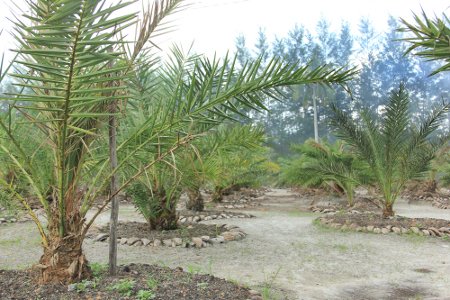
Dates, fruit of Middle Eastern origin of this one is certainly not so foreign in your ear. Especially when the fasting month or the Idul Fitri holidays arrived. Various types of dates will always meet the market in the homeland. The special fruit of Saudi Arabia (Middle East) has a distinctive taste is indeed increasingly enjoyed by our community because of the myriad benefits that can be obtained from it Moreover Kurma Ajwa / date of the Prophet. However, has it ever crossed your mind to cultivate this date in your yard? If yes then the following article will answer your wishes because here I will give a little review about the cultivation of dates that can be for you to try at home. Where I am also trying to cultivate fruit dates in the homeland, Ajwa khesusnya. Incidentally there is a suitable land sandy soil and a bit dry ... why not all try to be a natural laboratory of palm cultivation in Indonesia. Do not be outdone by the Land of the Jiran and Thailand who already have a palm garden and produce ... .our imports continue!
The first thing we should do is to find the date palm for the date palm in the store that provides it. Or maybe also can buy dates you usually eat at the store. The seeds of the dates we buy are what you will plant. Obviously after we enjoy the delicious meat date palm rich with benefits.
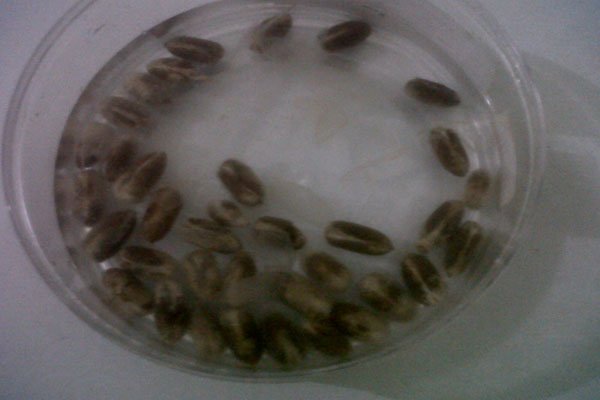
Collect Date Seeds
The second step is to immerse the date seeds. This you do 2 x 24 hours or 4 x24 hours. First you soak the date seeds that you have prepared for approximately 24 hours, then wash off the date palm meat that is still attached to the seeds. After that do the same soaking up to 24 hours to 72 hours for the date palm is really clean and ready for your seedlings.

Ajwa Seeds are soaked in water 2 × 24 hours
After doing the soaking process then the next thing you need to do is store it in containers that have enough moisture such as boxes or other containers that are closed. Also do not forget you add wet wipes on the bottom of the container so that the air humidity in the container is maintained. every day check the humidity. if dry spray a little water and close again.
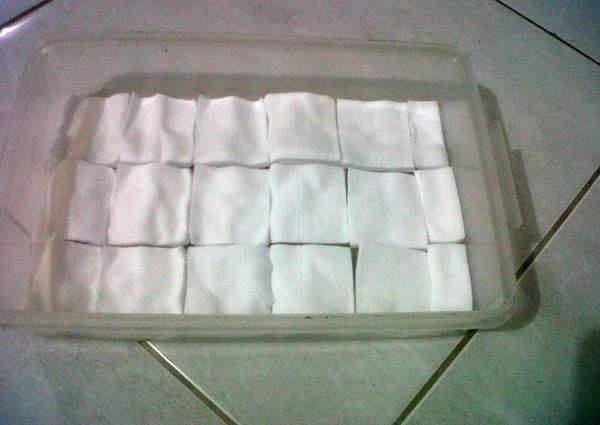
cotton wet seasoning medium
One week later the date palm will appear white spots. And this is a sign that it is what will become the root of your date.

begin to appear buds / sprouts dates
When the size has grown to approximately 1 to 2 cm, you move to another container such as polybag or small pot that you have given the right planting medium.

Your date palm will bring up the leaf, well when this leaf has reached a height of more than 1 / 2m, the date palm is ready for you to move to your yard.






The way it is quite practical and easy but you can not know for sure whether the dates you are planting are male or female. nah to know the date is the male or female the easiest is when it's big note the base of the midrib, the male dates of the base of the pelepah a bit bright yellowish, while the female rather gray base of the pelepahnya. the palm tree will bear fruit if the female tree and male tree mated flowers or termnya pengebungan, if not mated will the female flowers will fall out.
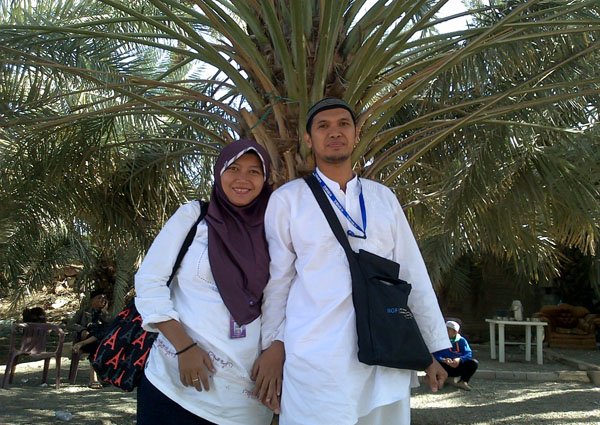
Narcissus in the palm garden
Dates (Phoenix dactylifera L.) are one of the oldest fruit plants grown in arid (dry) regions of the Arabian Peninsula, North Africa and the Middle East. The most important dates of origin of dates are in or near Iraq, but its spread to many countries has since ancient times. Dates are the main foodstuff and source of income for the local population in the Middle East and North Africa, and play a major role in the economic, social and environmental fields.
The top ten producing countries are Egypt, Saudi Arabia, Iran, United Arab Emirates (UAE), Pakistan, Algeria, Sudan, Oman, Libya, Arab Jamahiriya, and Tunisia. While the top five countries exporting dates are Iran, Pakistan, UAE, Saudi Arabia, and Tunisia.
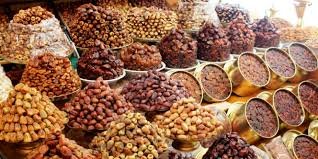
Dates Market
Dates belong to the plant family Palmaceae (Barrow, 1998). The name biology dates from its fruit: phoenix (meaning Greek) which means red or purple fruit and "dactylifera" which means "like a finger" because the fruit is like a human finger. The date palm is a plant with two houses so that the female tree is separated from the male tree.
Naturally pollinated dates by wind but pollination by insects is also possible. Different pollen sources (pollen), will affect the size, shape of seeds and tissue on the outer side of the embryo and fruit endosperm.

male and female flowers
There are three methods of palm plant propagation; the most common is the vegetative way of branching (offshoot) which will genetically be the same as the parent tree. The branch develops from the side shoots on the stem near the surface of the soil during the juvenile stage of the date palm. Branches, after 3-5 years attached to the parent tree will be rooted and can be planted separately from the mother. At that time the branch will begin to form flowers and bear fruit.
The second propagation is to produce sexually transmitted tillers. The saplings are not identical to the parent tree and are not genetically uniform, varying greatly in terms of production and fruit quality. As many as 50% of the plants are male plants, and this is only known 4-5 years later, after the plant begins to bloom.

The third method of multiplication of dates is through tissue culture, ie from the tip of the bud either through embryogenesis or organogenesis first developed in the 1970s to 1980s. Organogenesis can be achieved using side shoots and apical meristems, whereas embryogenesis via callus is formed from buds, young leaves, stems and rachilla. It takes 6 years to achieve production through a tissue culture process.
Currently UAE has the largest planted date tissue culture facility, more than 100,000 culture plants are produced annually because offshoot production can not meet the need for new tree planting procurement.
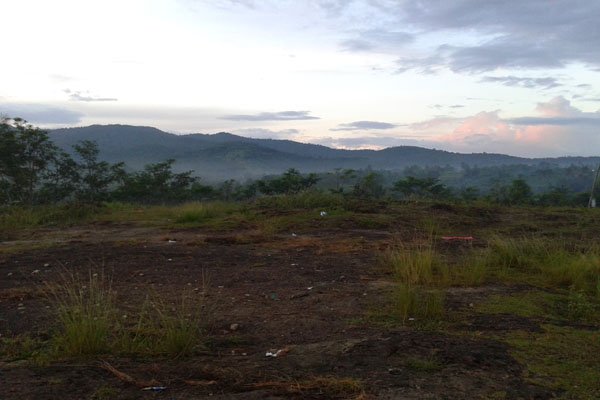
Land suitable for date palm
Dates are able to grow in a very hot and dry climate, and are relatively tolerant of alkaline and salty soils. Dates require long summer weather with very little rain and very low humidity from pollination to harvest, but have sufficient groundwater. Some describe dates as trees whose feet are in water but their heads are in flames. Such conditions are found in oases and wadis at the center of dates of dates in the Middle East.
Dates can grow at an average temperature of 12.7 - 27.5 ° C, can last up to 50 ° C or at freezing temperatures to as low as -5 ° C. The ideal temperature for growth during pollination to fruit ripening ranges from 21-27 ° C.
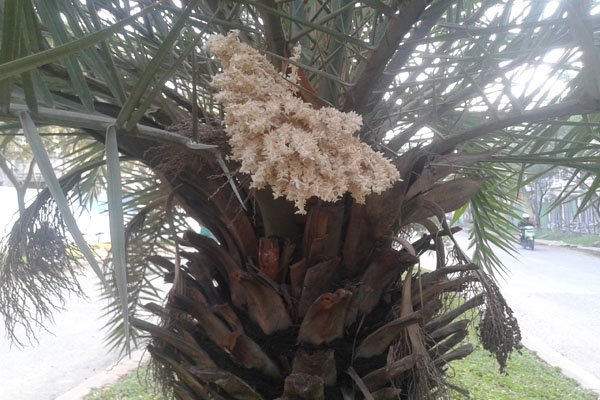
date palm trees
Dates bloom when the temperature rises to over 18 ° C and forms the fruit if more than 25 ° C.
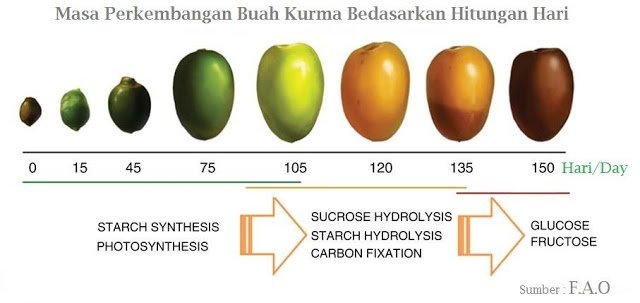
The rate of growth and development of dates follows the pattern of the sigmoid curve. The maturation of the fruit passes through four different stages: Kimri (immature green), Khalal (ripe red), Ruthab (soft brown), and Tamar (hard as a raisin). Start stage Kimri fruit size and weight increased rapidly, subsequently experienced a change in color from green, red brown. At the Tamar stage the fruit loses water content, and the sugar ratio: water is high enough to prevent fermentation, just like dry grapes (raisins). Sugar levels at the Kimri stage are only 20% when ripe reaches 88% of the dry weight of the fruit. The size and shape of the dates varies depending on the cultivar, the cultivation method and the environment. The average date palm produces 40 kg of fruit per year, even can reach 100 kg with excellent maintenance. The female tree begins to bear fruit after the age of 4-6 years, and produces maximum production after the age of 15-20 years. The average economic age of the palm garden is 40-50 years, but it is still productive for up to 150 years.
Fruit formation stage
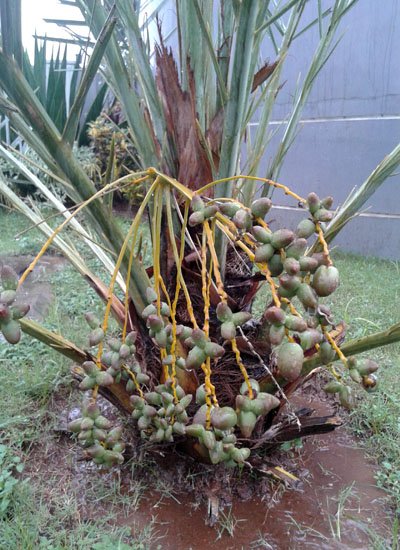
the females are fruiting in the cibubur
The date palms have many uses for humans. The main results are fruits, which can be eaten fresh, dried, or after being processed into various preparations. In North Africa and the Middle East, some dates are harvested and consumed at the Khalal stage when the fruits still contain high levels of tannins. But generally the dates are harvested at a perfectly ripe stage called Rutab and Tamar with high sugar content and low humidity and tannins. The date cultivars are classified as "soft", "semi-dry", or "dry" depending on the harvesting time associated with the water content.


Dates can be made into pudding, bread, cake, biscuit, candy, ice cream, and cereal mix. Fresh dates can also be made into juice, vinegar, wine, beer, sugar, syrup, honey, pickles, pasta, and food flavorings.

Tropical Dates in Thailand
Date palm fruit is a food with high energy content, which is 72-88% sugar content. At the Khalal stage almost all (80% -85%) of sugar is sucrose and close to mature sucrose undergoes hydrolysis to glucose and fructose. Dates contain iron, potassium, calcium, chlorine, magnesium, sulfur, little phosphorus, 16 amino acids, vitamins A, B1, and B2.

Tropical Dates in Thailand
Due to the long history of cultivation and its use, then almost all parts of the date palms are useful for humans. Tree trunks are used as wood or fuel. Stem and leaf fibers can be made into bags, baskets, saddles of camels, cables, mines, wooden crates, fans, food covers, furniture, mattresses, paper. Dry leaves can be made into a roof, wall insulation. Shoots of palm (heart) can be eaten as a salad or vegetable cooked first. Date palm seeds can be used as animal feed, or assembled into knick knacks. Oil from date palm can be made into soap. Date palm fruit also has a usefulness as a drug, which is as an astringent to overcome the problem of intestine, stomach, cough medicine, reliever fever, edema. In India the sap or exudate of dates is used to treat diarrhea and roots to treat toothaches.
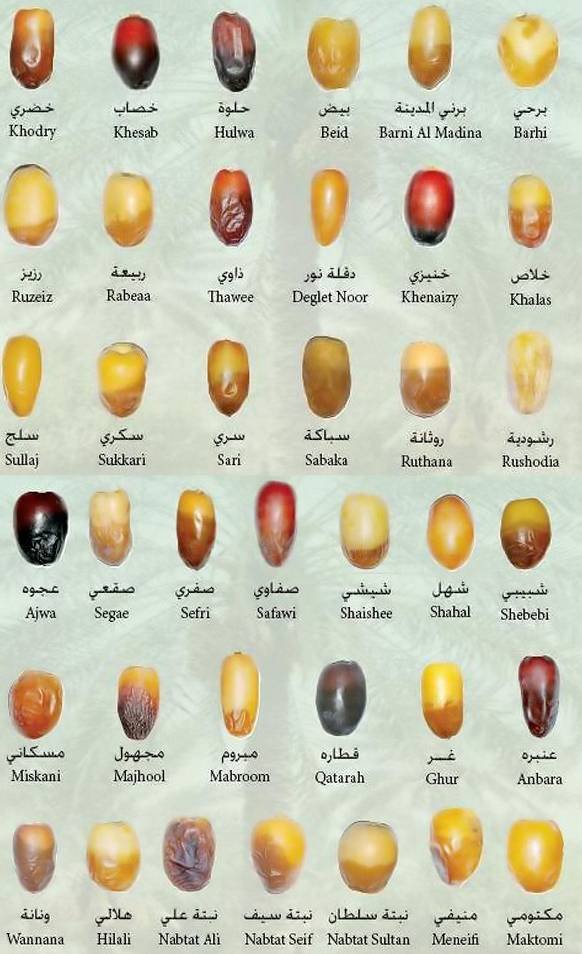
Although many cultivars of dates, but the world's leading is Deglet Noor (date of the light), cultivars grown in North Africa and California, originated from Algeria Sahara. Medjool, originally from the Tafilalt region, Morocco produces great fruits. Barhee, high-quality soft dates from Iraq and eaten at the Khalal stage. Halawy (sweet) soft dates, high-quality rich taste comes from Iraq. Hayany large half-baked dates from Egypt. Khadrawy (green) palm trees are short but productive enough to produce soft dates derived from Iraq. Zahidi, a palm tree with a compact canopy, produces semi-arid fruits from northern Iraq.
Many more local cultivars from other areas in the future will grow. But Medjool and Barhee are the most important cultivars produced by tissue culture techniques. In Indonesia have muali dikebunkan in Jonggol Farm belonging to pak Muhaimin Iqbal last I met him kurma kuljar dikebunya 2.5 years old moved on the land ... hopefully there is good news at the age of 3-3,5 years can be fruitful for the progress of Indonesian dates. Well doain ya pal palma buddy that I plant later will bear fruit dense ... yuk do not lose the same Thailand and Malaysia who have managed to develop tropical dates ... .we can. Aamien3x



Well that's some explanation of the date, may be useful for all of us until you come back again to my next post and so thank you.